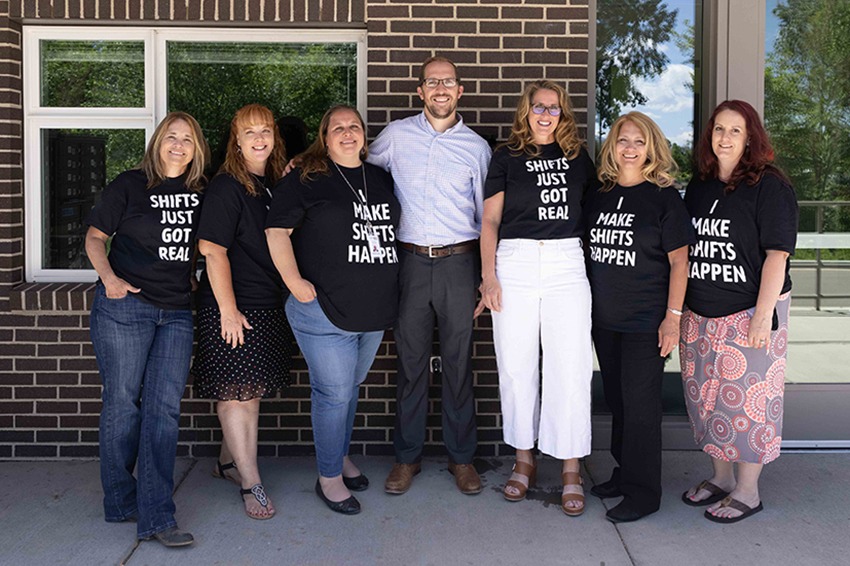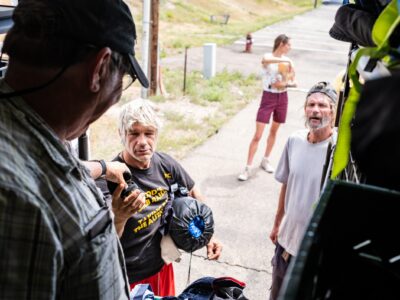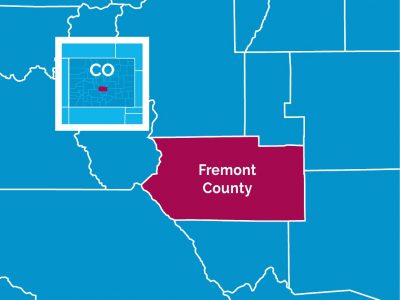In its efforts to measurably and equitably end homelessness, Built for Zero communities have been facing a significant challenge that has dominated homelessness response efforts: fragmentation.
Continuums of Care — the regional or local planning bodies that coordinate housing and services funding for homeless families and individuals — often have inconsistent geographies that cut across other administrative, programmatic, or funding boundaries. In addition, data management is not operable across systems or borders, and data itself is not equally comprehensive, reliable, or of the same quality level in each jurisdiction.
This fragmentation can contribute to poor lines of sight into homelessness, competing incentives across an array of siloes, and a limited ability to respond to constantly evolving conditions. Moreover, the tools at the disposal of state and local stakeholders may be inadequate for determining whether efforts and decisions about policies and decisions are adding up to population-level results.
“They saw this opportunity around the role they could play as a state entity — convening local teams towards a shared challenge and goal, while providing consistency across the entire state.”
Melanie Lewis Dickerson
The Built for Zero team’s experience suggests that state-level participants can play four powerful roles to align efforts to end homelessness and help drive communities toward zero. These include:
- Convening communities around a shared aim and building collective will
- Empowering and providing resources for those communities to build local, multi-agency homelessness reduction systems, rooted in shared, real-time data
- Working collaboratively to clear away barriers in direct response to local, data-identified needs
- Engaging anchor institutions and partners from other sectors, including health care, to align behind shared aims
Two years ago, Built for Zero began to codesign a model with the state of Colorado that sought to leverage both the national Built for Zero network and Colorado’s strengths as a partner to provide statewide consistency in the homeless response system.
“They saw this opportunity around the role they could play as a state entity — convening local teams towards a shared challenge and goal, while providing consistency across the entire state,” noted Melanie Lewis Dickerson, Built for Zero’s Portfolio Lead for Large-Scale Change.
The model has helped to accelerate the progress towards ending homelessness in Colorado, while working with players on the ground to respond to the needs and barriers they face in reaching functional zero. It has created a way for this information to be elevated to state-level leadership to try to clear the path for this work.
Building a unified team and vision across Colorado
An existing relationship between Built for Zero and state leadership laid a firm foundation upon which this statewide model and partnership was constructed. Launching in late 2019, the Colorado cohort, now composed of nine teams, supports an estimated 90% of people experiencing homelessness in the state. The action-focused, state-level team includes representation from public, private, healthcare, indigenous, veteran, and CoC agencies, with primary leadership stemming from the Office of Homeless Initiatives (OHI) within the Division of Housing, Colorado Department of Local Affairs (DOLA). Two other agencies play key roles — the Colorado Department of Human Services and the Department of Healthcare, Policy, and Financing — with Kaiser Permanente Colorado and the Colorado Health Foundation rounding out the partnership.
“The work that we produced together over the last couple of years has allowed us to create a sphere of influence that’s much bigger than Built for Zero,” explained Lewis Dickerson. “This has allowed the state to take the vision of ending homelessness to a much broader audience, like the general public, elected officials, and other community leaders.”
Together, the statewide team produced the state’s first flexible “playbook” on ending homelessness, an iterative framework for efforts to address homelessness in Colorado today and a vision for the future. This document presents a series of guiding principles with key goals, cross-cutting approaches, and a list of proven solutions that communities across Colorado have successfully implemented that can be replicated elsewhere.
“This playbook is a revitalization of OHI goals and actions to more strategically address the homelessness issues facing our state,” said Rick M. Garcia, DOLA Executive Director. “It deliberately aligns us with other state agencies all working together to make homelessness history.”
Scaling and accelerating progress toward zero
The ultimate goal is to help accelerate progress toward functional zero in communities in Colorado and show that it’s possible to end homelessness anywhere, for anyone, across the state. In order to support this work, this state partnership is helping communities achieve quality real-time data and drive population-level reductions, leveraging Built for Zero’s tools, training, and relationships.
“We now want to scale tools and support to the entire state, creating a sustainable infrastructure and set of practices so that the Built for Zero work is accessible to all communities across Colorado,” said Lewis Dickerson.
To date, four Colorado Built for Zero teams have reached the milestone of quality, real-time data on homelessness and two more are on track to hit this milestone by fall 2021. The team has also developed and published the first state-level, real-time performance dashboard.
This model has allowed the state to leverage funding to help improve local outcomes. In one instance, several communities that are part of the Balance of State Continuum of Care had highlighted gaps in their capacity to take up crucial Built for Zero practices, such as case conferencing, collecting data, or managing their by-name lists. The state team served as a conduit to identify where this barrier consistently appeared across multiple teams.
“Now we’ve been able to deploy capacity-building grants from a state-based funder to help Balance of State teams build up local leadership and capacity to drive the work around their local homeless response systems,” explained Lewis Dickerson.
This statewide collaboration helped Fremont County become the state’s first community to reach function zero for veterans in February 2021. In one instance, the Fremont team’s efforts prompted the state to look more closely at a policy barrier that regularly prevented veterans from being able to easily complete paperwork to secure housing, even with an available voucher. A brainstorming meeting among staff at Built for Zero, the Colorado Department of Local Affairs’ Division of Housing, and the VA led to a quick solution and a reexamination of these policies.

“We are hopeful that this achievement will inspire other communities to adopt a similar approach, and build on these efforts for the benefit of everyone experiencing chronic homelessness.”
Rick M. Garcia, DOLA EXECUTIVE DIRECTOR
“That’s the problem-solving, willing mentality that the partners have brought to the table,” explained Lewis Dickerson. “We saw a direct impact in Fremont, but it also has much bigger implications for other parts of the state and other folks that are experiencing homelessness that could be running into the same challenges.”
Garcia agreed, commenting, “We are hopeful that this achievement will inspire other communities to adopt a similar approach, and build on these efforts for the benefit of everyone experiencing chronic homelessness.”
The work in Colorado will continue to inform and influence Built for Zero’s state strategy embedded into the organization’s strategic plan, along with efforts outlined in the winning proposal for the MacArthur Foundation’s global 100 & Change $100M competition. Awarded in April 2021, this grant will help to accelerate an end to homelessness by supporting 75 geographically and politically diverse communities as they reach and sustain functional zero for chronic or veteran homelessness by 2026.
The communities and statewide team in Colorado are working to scale quality, real-time data across the whole state. Now that one community has reached functional zero for veteran homelessness, the goal is for a Colorado community to reach functional zero for chronic homelessness as well.
What’s ahead
“Ensuring those who have worked in service to this country have access to safe and secure housing is one of the most important things we can do, and I am pleased to see Fremont leading the way in what we hope will become the new standard in our state,” said Governor Jared Polis.
Colorado has indeed proved to be a strategic place to undertake these efforts and provide learning for other states. The diverse state offers a strong mix of urban and rural communities and the confluence of leaders on both sides of the political spectrum engaged in seeking solutions to homelessness.
“We’re really trying to figure out how we can accelerate the work that is happening on the ground — digging into that even more to figure out those barriers and how to help the local teams move even faster,” Lewis Dickerson said.
“The ultimate goal of this model is to make homelessness in Colorado rare, brief when it occurs, and to make sure that no one gets left behind.”





